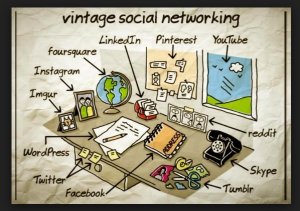Two communication skills that I consider important when leading policy change are these:
- Writing skills—the ability to capture someone’s attention through the written word is vitally important when working for change. The written word has the capacity to reach a broad audience and to offer compelling, in-depth information about an issue. Effective writing can bring an issue to life and stir people’s emotions. It can present current research to back up an issue and persuade people to support the cause.
- Social marketing skills—We live in a media-driven (led) society. The potential of social media reaching a wide audience is huge. Social media can be an exceptional tool for rallying support and getting out information. Social media has the potential to make the average person feel involved. Most people find it simple to complete an online survey or to participate in an online poll on a given topic. Similarly, the average person might find it more convenient to type out a quick “post” to discuss an issue than to take the time and trouble to write a “letter to the editor” of a print newspaper. Social media has the added impact of graphics and video to help present an issue. One wishing to create change could tailor social marketing to include a wide audience in an effort to garner support and create momentum to attract the attention of policy-makers. The ability to communicate through social media is a tremendous asset for one who wishes to create change.

As I reflect on my own association with these skills, I can see both strengths and opportunities for improvement. A personal strength I can easily identify is my love of writing. I have always enjoyed writing and I find it easy to collect my thoughts and put them on paper—I love the feeling I get when I am writing about something that I feel passionate about. To be truthful, there are times when I don’t even recall writing something—it just appears like magic—from my heart to the page. My kids call it “zoning out”.

As comfortable as I am with writing, I am decidedly not so comfortable with social media. I think most of my discomfort comes from inexperience. I am clueless about things like Twitter and MySpace. I have a nodding acquaintance with Facebook, but I confess I find it a little creepy and invasive. I enjoy YouTube, but have no idea how to post something there. I did create my first website which was gratifying and almost empowering. When all is said and done, I know that I need to move with the times and embrace social media as a tool for getting my message out and raising support for my issue. Social marketing skills are vital in this day and age. It’s time for me to move into the 21st century—at least where policy issues are concerned.